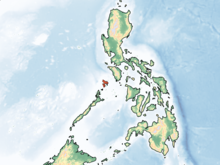
Palawan, officially the Province of Palawan, is an archipelagic province of the Philippines that is located in the region of Mimaropa. It is the largest province in the country in terms of total area of 14,649.73 km2 (5,656.29 sq mi). The capital city is Puerto Princesa. Palawan is known as the Philippines' Last Frontier and as the Philippines' Best Island.
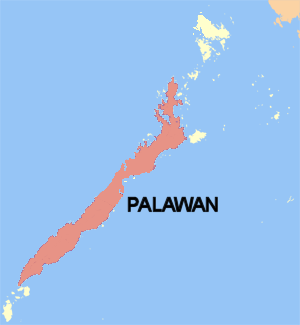
Palawan is the largest island of the province of Palawan in the Philippines and fifth-largest by area and tenth-most populous island of the country, with a total population of 994,101 as of 2020 census. The north west coast of the island is along the South China Sea, while the south east coast forms part of the northern limit of the Sulu Sea. Much of the island remains traditional and is considered by some as under-developed. Abundant wildlife, jungle mountains, and some white sandy beaches attract many tourists, as well as international companies looking for development opportunities.

The chital or cheetal, also known as the spotted deer, chital deer and axis deer, is a deer species native to the Indian subcontinent. It was first described and given a binomial name by German naturalist Johann Christian Polycarp Erxleben in 1777. A moderate-sized deer, male chital reach 90 cm (35 in) and females 70 cm (28 in) at the shoulder. While males weigh 70–90 kg (150–200 lb), females weigh around 40–60 kg (88–132 lb). It is sexually dimorphic; males are larger than females, and antlers are present only on males. The upper parts are golden to rufous, completely covered in white spots. The abdomen, rump, throat, insides of legs, ears, and tail are all white. The antlers, three-pronged, are nearly 1 m long.
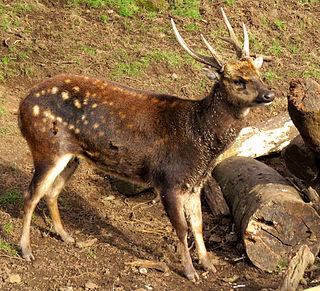
The Visayan spotted deer, also known as the Visayan deer, the Philippine spotted deer or Prince Alfred's deer, is a nocturnal and endangered species of deer located primarily in the rainforests of the Visayan islands of Panay and Negros though it once roamed other islands such as Cebu, Guimaras, Leyte, Masbate, and Samar. It is one of three endemic deer species in the Philippines, although it was not recognized as a separate species until 1983. An estimated 2,500 mature individuals survived worldwide as of 1996, according to the IUCN, although it is uncertain of how many of them still survive in the wild. The diet of the deer, which consists of a variety of different types of grasses, leaves, and buds within the forest, is the primary indicator of its habitat. Since 1991 the range of the species has severely decreased and is now almost co-extensive with that of the Visayan warty pig.
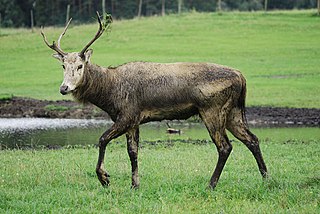
The Cervinae or the Old World deer, are a subfamily of deer. Alternatively, they are known as the plesiometacarpal deer, due to their ankle structure being different from the telemetacarpal deer of the Capreolinae.

The Philippine deer, also known as the Philippine sambar or Philippine brown deer, is a vulnerable deer species endemic to the Philippines. It was first described from introduced populations in the Mariana Islands, hence the specific name.

The Philippine mouse-deer, also known as the Balabac chevrotain or pilandok, is a small, nocturnal ruminant, which is endemic to Balabac and nearby smaller islands southwest of Palawan in the Philippines. The genus Tragulus means 'little goat' and the Philippine mouse-deer has been named so due to the horizontal pupils of the eyes. This position of the pupil allows for an increase in peripheral depth perception. It has traditionally been considered a subspecies of the greater mouse-deer. In 2004, though, T. nigricans was separated from T. napu as its own species due to differences in skull morphology. Contrary to its common name, the Philippine mouse-deer does not belong to the true deer family (Cervidae), but is rather more closely connected to antelope and antelope-like bovids; it is a member of the chevrotain family, a grouping of some of the world's smallest hoofed mammals.
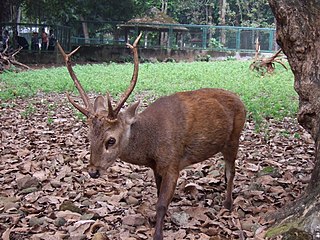
The Bawean deer, also known as Kuhl's hog deer or Bawean hog deer, is a highly threatened species of deer endemic to the island of Bawean in Indonesia. Due to ongoing habitat loss, small population size and limited range, the Bawean deer is evaluated as critically endangered on the IUCN Red List of Threatened Species. It is listed on Appendix I of CITES. It has few natural enemies except for birds of prey and large snakes such as pythons.

The Palawan bearded pig is a pig species in the genus Sus endemic to the Philippines, where it occurs on the archipelago of islands formed by Balabac, Palawan, and the Calamian Islands. It is 1 to 1.6 m in length, about 1 m (3.3 ft) tall and weigh up to 150 kg (330 lb).

The Philippine long-tailed macaque is a subspecies of the crab-eating macaque, known in various Philippine languages as matching/matsing or the more general term unggoy ("monkey"). It is endemic to the Philippine forests and woodlands, but especially in the mangrove forests of western central Philippines— particularly in Palawan, the Visayas, and Mindanao. The names M. f. philippinensis and M. f. philippinenesis have also been used, but arise from orthographical error.
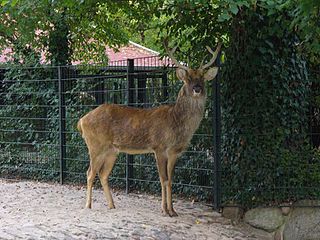
Rucervus is a genus of deer from India, Nepal, Indochina, and the Chinese island of Hainan. The only extant representatives, the barasingha or swamp deer and Eld's deer, are threatened by habitat loss and hunting; another species, Schomburgk’s deer, went extinct in 1938. Deer species found within the genus Rucervus are characterized by a specific antler structure, where the basal ramification is often supplemented with an additional small prong, and the middle tine is never present. The crown tines are inserted on the posterior side of the beam and may be bifurcated or fused into a small palmation.

Homo luzonensis, also locally called "Ubag" after a mythical caveman, is an extinct, possibly pygmy, species of archaic human from the Late Pleistocene of Luzon, the Philippines. Their remains, teeth and phalanges, are known only from Callao Cave in the northern part of the island dating to before 50,000 years ago. They were initially identified as belonging to modern humans in 2010, but in 2019, after the discovery of more specimens, they were placed into a new species based on the presence of a wide range of traits similar to modern humans as well as to Australopithecus and early Homo.
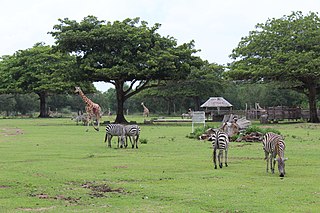
Calauit Safari Park is a wildlife sanctuary in the Philippines which was originally created in 1976 as a game reserve featuring large African mammals, translocated there under the orders of the President Ferdinand Marcos during his 21-year rule of the country.
Dewil Valley, located in the northernmost part of Palawan, an island province of the Philippines that is located in the Mimaropa region, is an archaeological site composed of thousands of artifacts and features. According to the University of the Philippines Archaeological Studies Program, or UP-ASP, the closest settlement can be found in New Ibajay, which is covered by the town capital of El Nido, which is located around 9 km (5.6 mi) south-east of Dewil Valley. Physically it measures around 7 km (4.3 mi) long, and 4 km (2.5 mi) wide. It is in this place which the Ille Cave, one of the main archaeological sites, can be found. It is actually a network of 3 cave mouths located at its base. It has been discovered that this site in particular has been used and occupied by humans over multiple time periods.
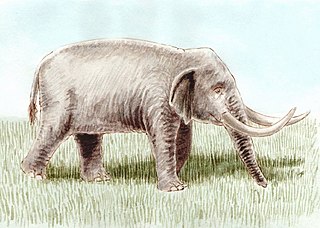
Elephas beyeri is an extinct species of dwarf elephant belonging to the Elephantidae family of the Middle Pleistocene. It was named after the anthropologist H. Otley Beyer. The type specimen was discovered on Cabarruyan Island in The Philippines but has since been lost.

The Sunda leopard cat is a small wild cat species native to the Sundaland islands of Java, Bali, Borneo, Sumatra and the Philippines that is considered distinct from the leopard cat occurring in mainland South and Southeast Asia.

The Bornean tiger or Borneo tiger is possibly an extinct tiger population that lived on the island of Borneo in prehistoric times. A live Bornean tiger has not been conclusively recorded, but the indigenous Dayak people believe in its existence, and occasionally report sightings.

